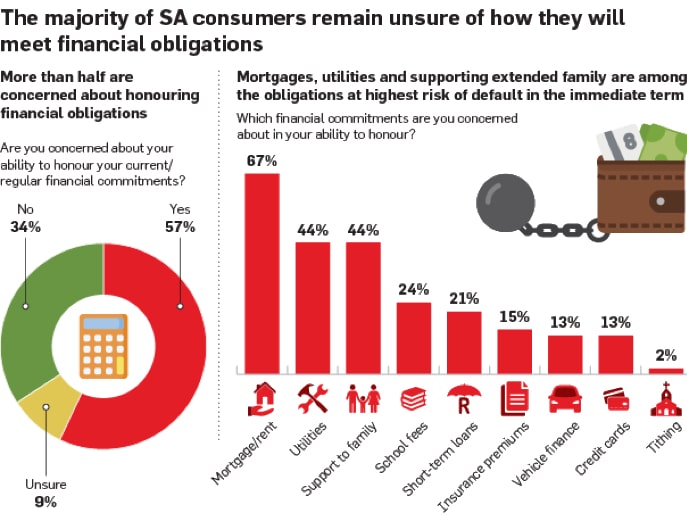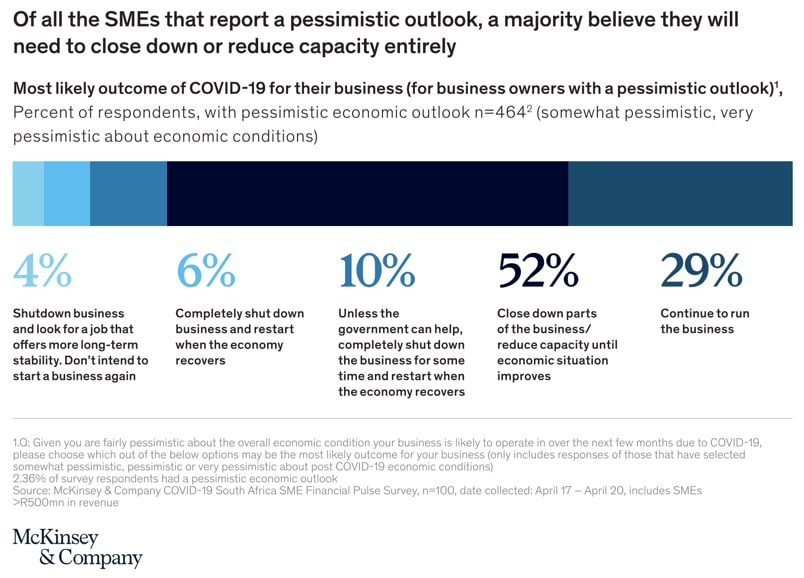When the COVID-19 crisis became evident in South Africa in mid-March, the South African government put strict lockdown measures in place, including school closures and store lockdowns which were accompanied by reducing the output of production facilities. The government implemented a number of policies including social distancing, curfews, mandatory facial masks, and stay at home orders. These non-pharmaceutical interventions (NPI’s) presented challenges for many workers especially in manufacturing and production industries.
As COVID-19 continues to sweep across the globe, tools that complement these NPI’s are being developed to effectively curb the spread of the disease. However, most of these tools are suitable only in industrialised countries where smartphone penetration is high. Much less emphasis has been placed on developing tools suitable for emerging markets and the businesses in these economies.
Obstacles in Emerging Markets
Emerging markets face a unique challenge when it comes to deploying technology to fight COVID-19 due to the large role that informal markets play in these economies. Not only are lockdown restrictions challenging to enforce, a significant number of occupations in emerging markets cannot be easily moved to remote work. Workers in the agricultural, manufacturing, and retail industries are far less likely to be able to work remotely than a lawyer or an economist.

According to a report entitled ‘South Africa Towards Inclusive Economic Development’, Covid-19 lockdown restrictions have resulted in a 40% reduction in wages predominantly affecting people in lower income brackets.
According to a study conducted by BCG in May 2020, more than two thirds of consumers fear not being able to pay their rent. This has resulted in a shift in consumer spending, primarily through delayed expenditure. As a result, developing states are faced with a complex trade-off between opening economies that have an inadequate capacity to contain the virus, or enforcing NPI’s that lead to loss of income for many individuals by restricting economic activity.
Figure 1: Consumer confidence in meeting financial obligations (Source: Boston Consulting Group)
Unfortunately, households are not the only ones feeling the brunt of NPI’s. Small and medium sized enterprises (SMEs) in emerging markets are struggling to keep afloat. In South Africa, for example, approximately one third of productive resources lay idle as a result of Covid-19 lockdown restrictions in February. Slowing demand has led SMEs to limit expansion plans and has also led to liquidity and cashflow management issues since a large majority of these businesses are unable to access loans or grants due to their small size, limited connections, and challenges in generating sufficient earnings.
A survey carried out by McKinsey & Company in South Africa in April 2020 revealed that 52% of SMEs that had a pessimistic economic outlook were considering closing down parts of their business or reducing their operating capacity. In contrast, only 21% of respondents were optimistic that the South African economy will recover quickly. In addition to taking steps to innovate and pivot their businesses in response to this new reality, many SMEs are likely to need state support if they are to emerge from the crisis in one piece.
Figure 2: Sentiment of SMEs with pessimistic outlook (Source: McKinsey)
Technological Tools to Decrease Reliance on NPI’s
While many local governments in South Africa have restricted the movement of people and put in place measures such as curfews and alcohol & cigarette bans in order to protect public health, these restrictions come with an economic cost. At the same time, towns and metropolitan areas that have sought to keep the economy open need to do so with care, ensuring the pandemic remains under control.
Many modern cities such as Berlin and London have found various ways to open their economies while decreasing risk through pre-emptive countermeasures in public transport and social distancing.
Due to the challenges of enacting these measures in emerging economies, local governments should look at deploying innovative technological solutions to reduce the spread of the virus. This is often referred to as reducing the ‘reproduction number’ (R), which means reducing the average number of new people who are infected by each infected person.
To open up emerging economies, certain approaches can be used to maintain day-to-day operations while lowering R. Two of these approaches are described below.
1. Contact Tracing Apps
Pathcheck Foundation has developed an open source software that can be used by public and private sector organisations as a Smartphone App for digital contact tracing and exposure notification. While the progress made by Pathcheck is tremendous in enabling cities to reopen without sacrificing individual privacy, the footprint of such a system will be limited in emerging economies where up to 50% of residents do not have smartphones.
In South Africa, a platform known as Covi-ID has been developed to make use of a QR code that is generated from a personal data wallet. The user’s information is encrypted and stored in the wallet and is updated with a geolocation receipt each time the QR code is scanned when entering shops, banks, or public transport.
Individuals without a smartphone can generate the QR code that corresponds with their phone and ID number on a friend or relative’s phone and then print a QR card at designated shops. Based on the patient’s geolocation history, the contact tracer can create a hotspot map of COVID-19 cases, including geolocations and times, which is then shared with the Covi-ID platform. In this fashion, a solution to the lack of smartphones has been developed.
During the contact tracing process, contacts of a patient who tests positive for COVID-19 are identified and informed of their exposure so that they can get tested, self-isolate and watch their symptoms.
Contact tracing is one of the key tools for containing COVID-19 by making it possible to quickly and efficiently identify and isolate infected patients and their exposed contacts.
2. Public and Private Sector Prioritisation of Technology
New digital technologies create an opportunity for SMEs to both enhance their reach and lower costs, overcoming traditional scale disadvantages relative to larger players. For example, a local BPO SME in South Africa has leveraged a virtual private network, a widely available technology, to transfer their systems onto a custom-made platform that can be quickly modified as their needs shift. This has allowed them to rapidly move their call centres to remote working in the wake of nationwide lockdowns.
In tandem with businesses, governments should focus on basic R&D and on building infrastructure in order to provide a foundation for innovation and thriving entrepreneurial ecosystems. For example, Malaysia’s national commercialization platform, PlatCOM Ventures, helps entrepreneurs turn their ideas into successful products and services. In South Africa and other emerging markets, more needs to be done to identify and fund high-growth businesses and to support innovation.
Conclusion
While eradicating NPI’s in the near future may not be prudent, easing restrictions will ultimately be necessary in order to limit the Covid-19 economic aftermath.
Contact tracing tools that aim to fight COVID-19 in emerging markets must overcome the challenge of low smartphone penetration. In addition, government and the private sector must make coordinated efforts to foster innovation. Government funding that supports SMEs in this challenging business environment would also be welcomed.
Oduor Ochieng is an Econmics Honors student at the University of Cape Town. He has experience working in a Medical startup and Fintech company.


